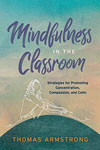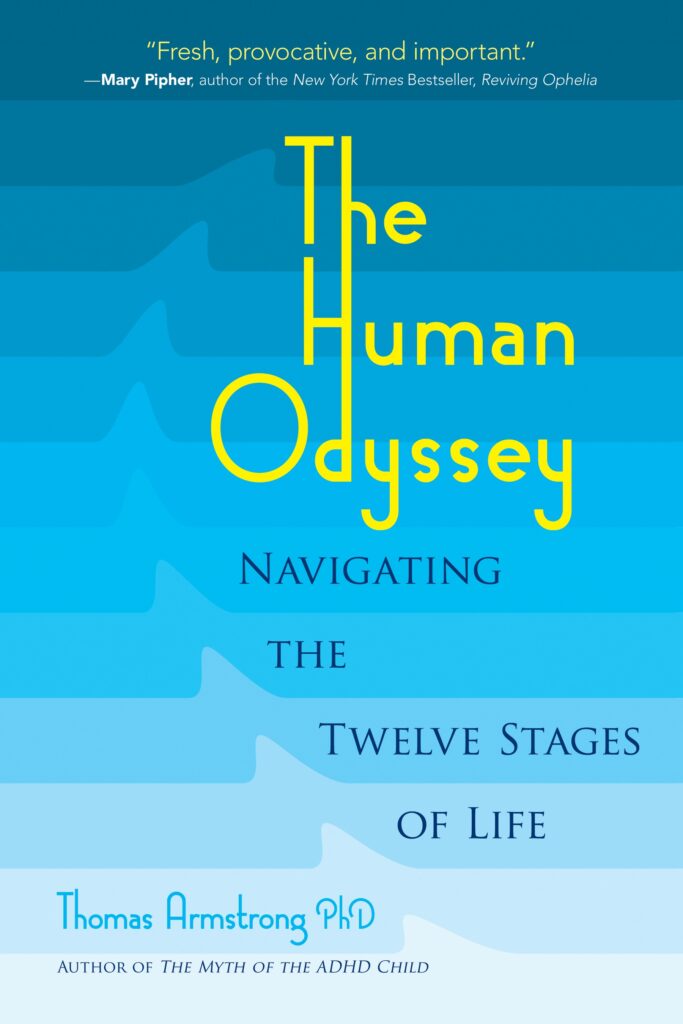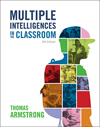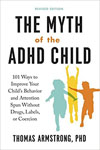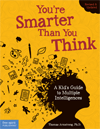 This video – part 11 in my 12-part video series on The Myth of the ADHD Child – introduces the field of neurodiversity as a better way of thinking about children diagnosed with ADHD. It defines neurodiversity and discusses the problem in positing any kind of ”normal brain” in the general population. The video then suggests that because ADHD has several gifts associated with it, calling it a disorder (with three negatives in its title), fails to account for those gifts or diversities in children with that label. It describes six specific ways in which children and teens with the diagnosis possess diversities not disorders when compared with neurotypical individuals: brain development rates, a penchant for novelty-seeking, a tendency for occasional episodes of concentrated focus (flow), strengths in bodily-kinesthetic intelligence, an affinity with nature, and a need for higher levels of optimal stimulation. The video concludes with a plea for those working with kids diagnosed with ADHD to think of them in terms of their diversity and not their disorder.
This video – part 11 in my 12-part video series on The Myth of the ADHD Child – introduces the field of neurodiversity as a better way of thinking about children diagnosed with ADHD. It defines neurodiversity and discusses the problem in positing any kind of ”normal brain” in the general population. The video then suggests that because ADHD has several gifts associated with it, calling it a disorder (with three negatives in its title), fails to account for those gifts or diversities in children with that label. It describes six specific ways in which children and teens with the diagnosis possess diversities not disorders when compared with neurotypical individuals: brain development rates, a penchant for novelty-seeking, a tendency for occasional episodes of concentrated focus (flow), strengths in bodily-kinesthetic intelligence, an affinity with nature, and a need for higher levels of optimal stimulation. The video concludes with a plea for those working with kids diagnosed with ADHD to think of them in terms of their diversity and not their disorder.
Transcript of Video
Hi, I’m Dr. Thomas Armstrong. This is part 11 of my 12-part video series on The Myth of the ADHD Child. This video is entitled ‘’ADHD Isn’t a Disorder, It’s a Diversity’’
Let me preface this presentation by saying that I DO believe that ADHD symptoms exist. But I believe after 50 years of studying this issue, that the hypothesis that there is a specific medical disorder called ADHD causing these symptoms is wrong and there are many other points of view that can account for these symptoms. The videos in this series describe some of these perspectives. In this video, I look at how ADHD isn’t a disorder, it’s a diversity.
Over the past fifty years, our culture has developed an appreciation for the diverse forms of life in our world. The diversity, for example, of flowers [slide 3]. The diversity of animals [slide 4]. The diversity of cultures [slide 5]. But when it comes to the diversity of human brains, it seems that we tend to turn to the American Psychiatric Association’s Diagnostic and Statistical Manual (DSM). You can see here the different versions [slide 7], and the books have gotten thicker with each new version, as the APA added more disabilities to its lists. Now you might say, we need to have some standards by which to judge brains so that we can tell which ones are normal and which are abnormal.
I will agree that our world needs standards. Until recently, if you wanted to know what the standard kilogram was, you had to go to the basement of the Department of Weights and Measurements in Paris and look under two or three bell jars, and there would be the standard kilogram in the form of a chunk of metal [slide 8]. People would fly in from all over the world with their own kilograms to calibrate them with this standard.
However, you will never find in a museum or a laboratory, stuck in a vat or under two or three bell jars, the standard or normal human brain. And since there is no normal brain, how can anyone say which brains are abnormal? This means that all the brains out there in the world are simply different, not abnormal.
Several years ago, I was cruising the Internet and discovered this website, neurodiversity.com [slide 10]. For the record, it’s now called neurodiversity.net and is essentially in a dormant state. But at the time, it blew me away, especially with its slogan ‘’honoring the variety of human wiring’’ with pictures of people like Andy Warhol and Alan Turing and Glenn Gould; people who were eccentric, but who’s greatness stood out over whatever so-called disabilities they may have had. The term neurodiversity struck me as a wonderful way to account for the diversity of brains and helped me to understand that mental conditions we’ve considered to be abnormal, shouldn’t be considered as disorders or dysfunctions but rather as differences in the way the brain is organized.
One definition that I found on the internet defined neurodiversity as ‘’an idea which asserts that atypical (neurodivergent) neurological development is a normal human difference that is to be recognized and respected as any other human variation.’’
We value bio-diversity. We value cultural diversity. We value racial and ethnic diversity, diversity in gender identity, religious diversity, and diversity in sexual orientation. Why don’t we value neuro-diversity?
Neurodiversity emerged in the 1990’s as a campaign by individuals diagnosed with autism as a way for them to tell the broader community that they were just fine thank you very much and that they didn’t need others to label them as disabled or disordered. They said that they had their own unique ways of communicating, interaction, and advocating for themselves and their needs. Neurodiversity then grew to accommodate other ‘’differences’’ including ADHD, dyslexia, bipolar disorder, and intellectual disabilities. As one measure of its status in the field of academics, Stanford Medical School is now in its fourth year sponsoring a Neurodiversity Summit, and, parenthetically, I’ll be one of the keynoters this year [slide 12].
So, what I’m trying to say here is that while ADHD is considered a disorder by most people (it’s in the name itself after all), within the context of neurodiversity, it’s not a disability, it’s a diversity, and that’s how we need to begin to think about it.
Let me drive home the point in another way. ADHD has three negatives in it. Deficit, Hyperactivity, and Disorder. Kids sometimes use the word ‘’dissed’’ as a pejorative (hey, sir, he ‘dissed me’’) meaning ‘’he disrespect me.’’ Well, when we use the term ADHD, we’re disrespecting millions of children in the U.S. and around the world.
I thought I’d try to illustrate just how this must come across to many kids, and I made up this fantasy disorder, just out of the top of my head, and it too has three negatives in it. Horrid Perceptual Disintegration Decline (HPDD). We use the term ADHD so cavalierly these days that we’ve become habituated to it’s inherent negativity, and this made-up term may help us become more sensitized to how horrible a label like this must sound to kids who have been saddled with it, despite the efforts of professionals to ameliorate its impact by dressing it up in fancy clothes.
Here [slide 16], for example, is one of the books ADHD professionals use to try to spiff up the term. Otto Learns About His Medicine: A Story About Medication for Children with ADHD. In the book Otto is a car whose engine runs too fast. Eventually, the car doctor uses an additive that makes the car run just fine. Comparing the child’s incredibly complex brain to a car is pretty insane. In fact, we’re now finding out that the brain is not a machine like a computer after all. According to Nobel Prize winning biologist Gerald Edelman, it’s more like a rain forest. And comparing a child’s brain to a machine risks falling into the trap of common insults like ‘’his elevator doesn’t go to the top floor.’’
At any rate, ADHD is not a broken machine, as that book suggests, and not a disorder at all. It should be regarded rather as a diversity. So, let’s look at some of these differences in kids diagnosed with ADHD. First, there’s normal but delayed brain development.
I dedicated one whole video in this 12-part series to a look at the developmental factors at work in ADHD, and how research has shown that the brain of the child identified as having ADHD develops normally, but 2-3 years later than neuro-typical kids [slide 18]. So there’s a brain difference. Not a disorder.
In the third video in this 12-part series, I looked at how the child labeled ADHD deployed different (but not inferior) kinds attention in different situations.
In this case, the child diagnosed with ADHD tends to be a novelty-seeker rather than being someone who is satisfied with the same-old same-old way of doing things. He’s a pioneer, an explorer, an adventurer, which is only a disorder if you believe that we must at all times stick with the way things are. Civilization wouldn’t have made much progress if that type of attitude were too common, and maybe that would be the real disorder. Same-old same-old Disorder (SOSOD).
Kids diagnosed with ADHD also deploy their attention in another way, for longer concentrated periods of time. The child who can focus on a Lego project, for example, or a video, for hours at a time.
Scientists call that kind of attention, flow – and it’s considered a very valuable mode of perception that’s found in highly trained individuals like rock climbers, artists, and surgeons. Montessori called it ‘’the great work’’ when a child got into a period of concentration like that in working with her famous materials in the classroom.
In my own classroom teaching experience, I found that many kids with attentional differences were bodily-kinesthetic learners and thinkers, to use Harvard psychologist Howard Gardner’s term. They learned best by moving, by touching, by building things, by acting things out. And in a classroom focused on sitting still for long periods of time, it looks like a disorder but it’s really the classroom that has the disorder for expecting kids like this to sit still for so long.
Kids identified as having ADHD are also diverse in their ability to think and behave in creative ways. That doesn’t necessarily mean that they paint like Picasso or compose music or sculpt. But it does mean that they see things in a way that others don’t see them, and this can mark them out by parents or teachers as ‘’trouble-makers’’ or ‘’disordered.’’ But again, the disorder seems to be in those who just accept everything they experience without doubt, or insight or excitement. I gave a talk once at a school called the Make-a-Mess School, and I thought, this is the perfect school for kids diagnosed with ADHD.
In video #9, I talked about how ADHD symptoms would lessen or go away entirely if the child was out in nature. These kids seem more comfortable in nature than they do in the school classroom, or even at home indoors. They love looking for insects and animal tracks and strange looking plants and trees. In Norway, they let kids spend at least one hour a day out in nature in their schools. Here in the U.S., one writer, Richard Louv, has coined the phrase ‘’nature deficit disorder’’ to describe how too many of our kids stay inside because that’s where the video games are.
Finally, these are kids that love stimulation. They have a higher need for stimulation than the average kid. Sidney Zentall, a Purdue researcher, has done the most research on this over the past forty years. She’s rigged up highly stimulating classrooms and seen how the disruptive behaviors have decreased. These kids are taking a stimulant in many cases to calm them down. What they really need is educational stimulation, not drugs. To call a hunger for stimulation a disorder is a basic mistake on the part of the ADHD experts. This hunger for stimulation is what produces new learning, new discoveries, and an enhanced satisfaction with living.
So. this brings us back to the issue of diversity. Why do we like diversity? Because it provides a change of pace, it offers new possibilities, it lets us feel a deep appreciation for differences.
Here’s a calla lily [slide 32]. Yes, we could see it as a ‘’disordered flower’’ if that’s how we tend to see things in life. Maybe you would say that this flower suffers from ‘’petal deficit disorder.’’ That’s what happens when you take something whole and vital and see it through what I call crud-colored glasses. Most of the rest of us would say that here’s a beautiful living thing and the fact that it has one petal doesn’t make it disordered. Only if you expect all flowers to have multiple petals do you see this one as disordered. But the calla lily’s one petal is part of its nature, its uniqueness, its freshness.
Are we going to look at kids as if they have the equivalent of petal deficit disorder? Or instead, can we learn to appreciate each child’s uniqueness, vitality, and exuberance. Each child comes to us as a miracle that can give rise to millions of possibilities. Which side are you on? Disorders, or diversities? I can tell you that it will make an incalculable difference to the child which of those two views you take.
For more information about neurodiversity, see my two books on the subject: The Power of Neurodiversity: Unleashing the Advantages of Your Differently Wired Brain, and Neurodiversity in the Classroom: Strength-Based Strategies to Help Students with Special Needs Achieve Success in School and Life. Each book contains a chapter on the issue of ADHD applied to neurodiversity.
For more information about the topic of this video and other themes of this video series, see my book The Myth of the ADHD Child: 101 Ways to Improve Your Child’s Behavior and Attention Span without Drugs, Labels, or Coercion. It’s available through online stores like Amazon, national chains like Barnes and Noble, and independent bookstores worldwide. It’s also available as an audio recording on Audible. See also my book for K-12 educators: ADD/ADHD Alternatives in the Classroom. And make sure to watch my other videos in this series on You Tube. Thanks so much!
This blog post was brought to you by Thomas Armstrong, Ph.D. and www.institute4learning.com.
Follow me on Twitter: @Dr_Armstrong








